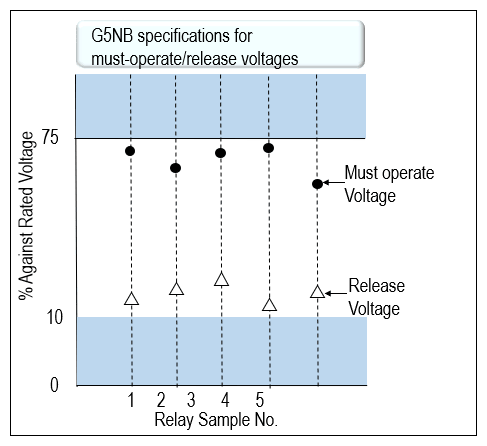Why does the product catalog say that the relay operating voltage is *% max. and the release voltage is *% or higher?
ID: FAQE10012E
update:
Answer
The operating voltage is such that the relay will always operate when a voltage higher than that value is applied, and the return voltage is such that the relay will always release when a voltage lower than that value is applied.
Explanation
To turn ON/OFF reliably:
To ensure that the relay operates and releases, apply *% or higher of the rated voltage when turning it on, and apply *% or less of the rated voltage when turning it off.

Using G5NB as an example:
Operate voltage 75% max., release voltage 10% or higher (value when coil temperature is +23°C)
When the rated coil voltage is 24 VDC:
- [Operate voltage] If it is 24 x 0.75 = 18 V or higher, all relays operate.
- [Release voltage] If it is 24 x 0.1 = 2.4 V or less, all relays release.
The operate/release voltage characteristics indicate the characteristics of the relay and should be used within the allowable voltage range.
Also, the voltage should be basically zero when it is OFF. Do not leave any residual voltage.
Test method
The test methods for the operating voltage and release voltage conform to the JIS standard (C5442-1996).
Quick tips
The relay will operate even if the rated voltage is not applied, but operation will become unstable and the risk of failure will increase.
| Product category | Relays Signal Relays Power Relays |
|---|---|
| Classification | Selection, Characteristics |
| Related keywords |
|